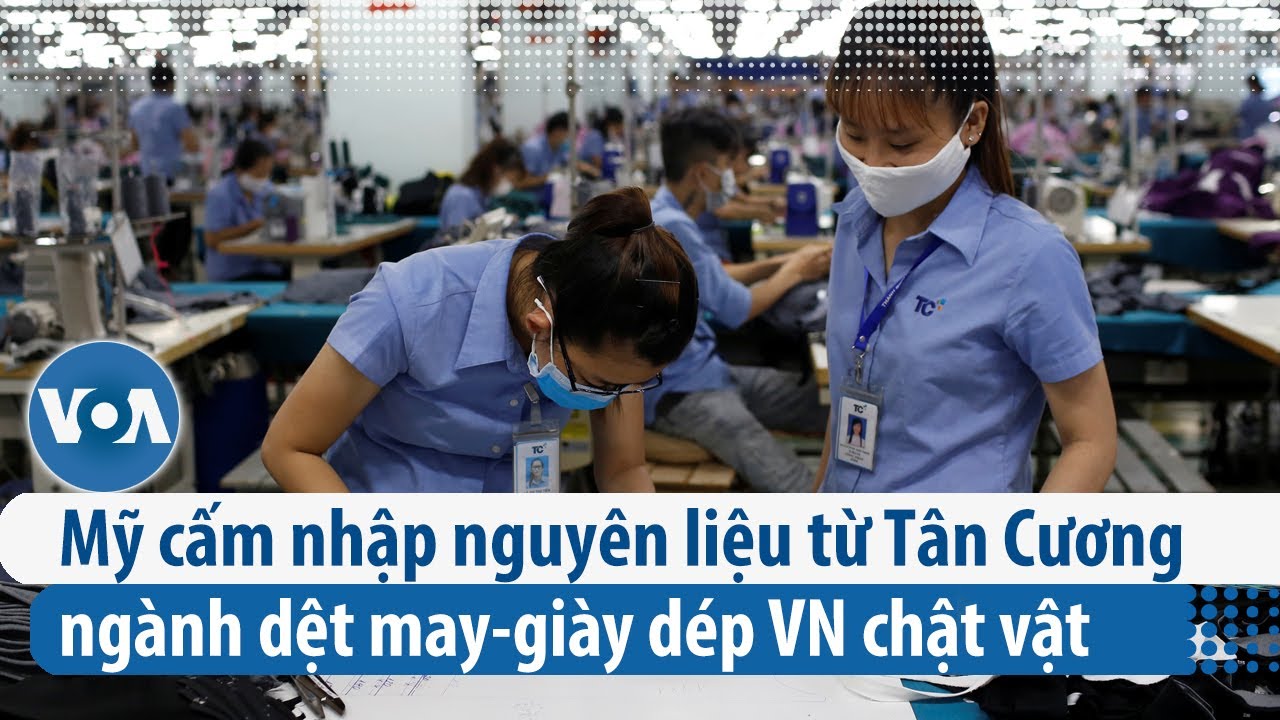Mỹ Cấm Nhập Nguyên Liệu Từ Tân Cương, Ngành Dệt May-Giày Dép Vn Chật Vật | Voa Tiếng Việt
Unleash Your Creative Genius with MuseMind: Your AI-Powered Content Creation Copilot. Try now! 🚀
Vietnam's garment and footwear manufacturers are feeling the heat as the United States imposes restrictions on imports from China's Xinjiang region. According to Reuters, the stringent regulations imposed by the US are having a significant impact on an industry that has already seen nearly 90,000 job losses in Vietnam since October due to a slowdown in global demand.
Official US data analyzed by Reuters shows that among garment-exporting countries, Vietnam, which is considered a global manufacturing hub, is facing the most severe impact from the US Forced Labor Prevention Act (UFLPA).
Since June of last year, the US law requires companies to prove that they are not using forced labor-derived raw materials or components in Xinjiang. The punitive measures by the US are becoming even more damaging in a context where demand for clothing in affluent countries is declining, resulting in reduced industrial production and exports from Southeast Asian countries, which are major suppliers to brands like Gap, Nike, and Adidas.
Out of the $15 million worth of garments and footwear held for inspection under the UFLPA, more than 80% is from Vietnam, and only 13% of Vietnam's goods have been cleared, according to US customs data as of April 3rd.
According to the UK news agency, the value of rejected shipments from Vietnam to the US exceeds $2 million, three times higher than those from China as the punitive measures have multiplied in the early months of this year.
Although the suspended shipments constitute a small portion of the $27 billion worth of garments and footwear that Vietnam exported to the US last year, Vietnam will have to make "even more painful" adjustments, as reported by Reuters, in order to comply with US laws.
This will have an impact on US consumers as Vietnam is a significant supplier of cotton fiber-based apparel for them, according to the US Department of Commerce.
Challenges for Vietnam's Garment and Footwear Industry
The trade restrictions placed on Vietnam's garment and footwear industry are posing significant challenges for the country. With a heavy dependence on exports, any disruption in the global supply chain can have severe consequences for the sector and its workforce.
The US regulations, particularly targeting forced labor practices in Xinjiang, are adding another layer of difficulty for Vietnamese manufacturers. They now have to navigate stringent compliance requirements and provide evidence that their supply chains are free from forced labor. This poses logistical and financial challenges, as companies need to trace and verify every step of their production process.
Furthermore, the declining demand for clothing worldwide due to the economic impact of the COVID-19 pandemic has already taken a toll on the industry. With reduced orders and lower revenue, manufacturers are struggling to maintain operations and retain skilled workers.
The Need for Sustainable Solutions
In light of these challenges, Vietnam's garment and footwear industry needs to find sustainable solutions to adapt and thrive in an increasingly complex global trade environment.
First and foremost, manufacturers must invest in diversifying their export markets. Relying heavily on the US market leaves them vulnerable to trade restrictions and fluctuations in demand. Exploring new markets, such as Europe or the Asia-Pacific region, can provide alternative avenues for growth and mitigate the impact of disruptions in any one market.
Additionally, companies should prioritize sustainable and ethical practices throughout their supply chains. By ensuring transparency and responsible sourcing, manufacturers can not only comply with international regulations but also appeal to conscious consumers who value ethical products. This can help them build long-term partnerships with brands that prioritize sustainability and human rights.
Moreover, focusing on innovation and technology adoption can help Vietnamese manufacturers stay ahead of the curve. Investing in automation, digitalization, and advanced manufacturing techniques can improve efficiency, reduce costs, and increase competitiveness. This will not only enhance the industry's resilience but also create new opportunities for skilled jobs and economic growth.
Conclusion
The trade restrictions imposed by the US on Vietnam's garment and footwear industry are causing significant disruptions and challenges for manufacturers and workers. In order to overcome these obstacles, the industry needs to diversify its export markets, prioritize sustainable practices, and embrace innovation.
Although the road ahead may be difficult, Vietnam's garment and footwear industry has a strong foundation and a track record of resilience. By embracing change and finding creative solutions, it can navigate through these challenging times and emerge stronger, more sustainable, and better equipped for future success.

Related Recaps
- Lil Nas X Arrives at the Met Gala in Head-to-Toe Silver | Met Gala 2023 | Vogue
- 4 Fun Fold Card Kits Free
- Reaction to Lakers-Grizzlies Game 2, Draymond Green suspension | Colin Cowherd + Jason Timpf NBA
- Latico Leathers: Uncovering The Surprising Phone Case Hack You Won't Believe!
- AD In Wheelchair to Locker Room After Injury